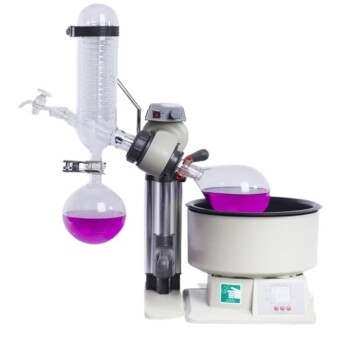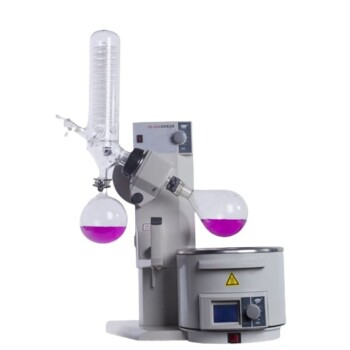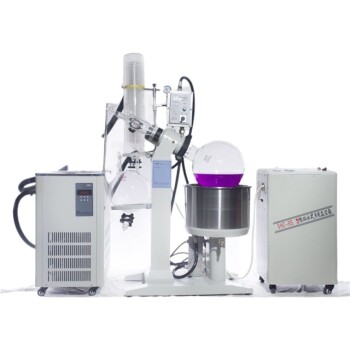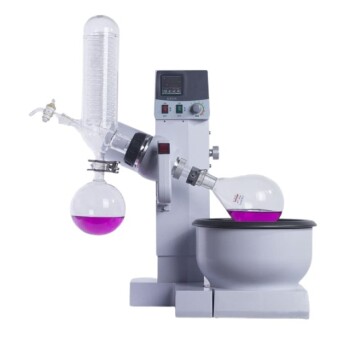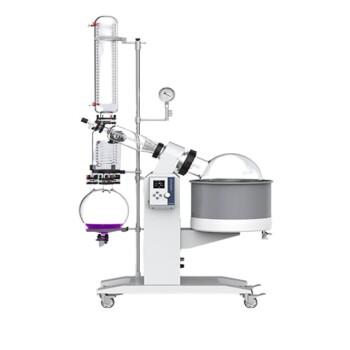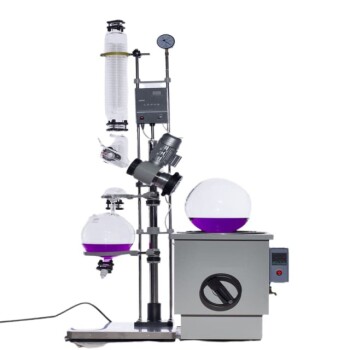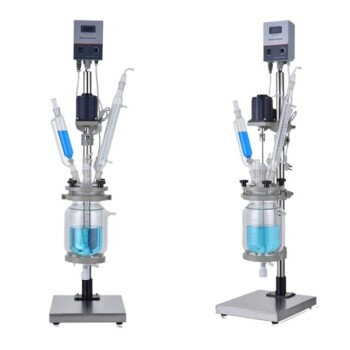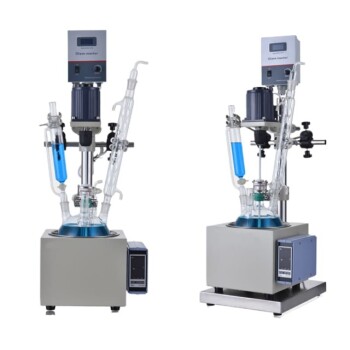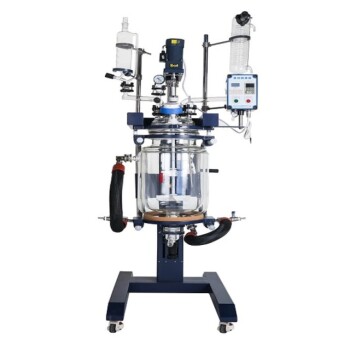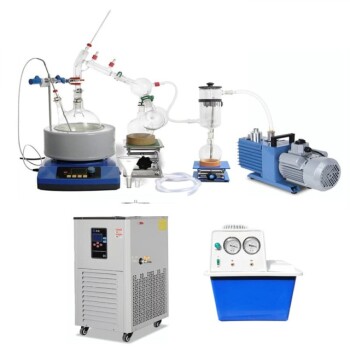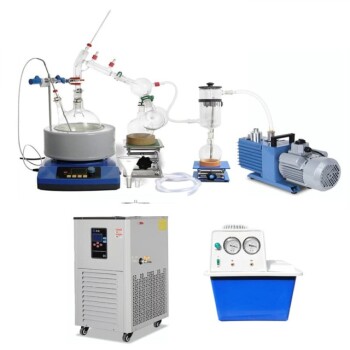When using a rotary evaporator, safety is paramount to prevent accidents such as implosions, explosions, burns, and entanglement. Key precautions include wearing appropriate personal protective equipment (PPE), ensuring proper ventilation, handling glassware carefully, and avoiding contact with rotating parts. Additionally, users must manage solvent vapors, prevent mixing incompatible chemicals, and ensure the equipment is securely fastened. Proper disposal of solvents and adherence to operational guidelines, such as controlling water bath temperature, are also critical. By following these precautions, users can minimize risks and ensure safe and efficient operation of the rotary evaporator.
Key Points Explained:

-
Wear Appropriate Personal Protective Equipment (PPE):
- Always wear goggles, gloves, and a lab coat to protect against chemical splashes, burns, and glass breakage.
- PPE is essential to shield the user from potential hazards such as hot oils, glass fragments, and solvent vapors.
-
Ensure Proper Ventilation:
- Operate the rotary evaporator in a well-ventilated area or under a fume hood to prevent the accumulation of harmful solvent vapors.
- Proper ventilation reduces the risk of inhaling toxic fumes and minimizes the potential for fire or explosion.
-
Handle Glassware with Care:
- Inspect glassware for flaws or cracks before use to avoid implosions caused by vacuum pressure.
- Use clips to securely fasten the flask and bump trap to prevent accidental detachment during operation.
- Handle glassware gently to avoid breakage, which can lead to injuries or contamination.
-
Avoid Contact with Rotating Parts:
- Keep loose clothing, hair, necklaces, and jewelry away from the rotating parts of the evaporator to prevent entanglement.
- Entanglement can cause severe injuries, so maintain a safe distance from moving components.
-
Manage Solvent Vapors Carefully:
- Be cautious when disassembling the equipment to avoid exposure to residual solvent vapors.
- Use a bump trap to prevent contamination and ensure that solvent vapors are directed safely away from the user.
-
Prevent Mixing Incompatible Chemicals:
- Empty the solvent collection flask before use to avoid mixing incompatible chemicals, which can lead to dangerous reactions.
- Ensure that the flask is clean and free of residues that could react with the solvent being used.
-
Control Water Bath Temperature:
- Set the water bath temperature below the boiling point of the solvent to prevent overheating and potential explosions.
- Overheating can cause rapid boiling, leading to bumping and splashing of hot liquids.
-
Avoid Concentrating Unstable Impurities:
- Do not concentrate unstable or reactive compounds with impurities, as this can lead to explosions.
- Ensure that the sample being evaporated is stable and free of hazardous contaminants.
-
Follow Proper Disposal Procedures:
- Dispose of solvents and other liquids according to laboratory safety protocols to prevent environmental contamination and health risks.
- Use designated waste containers and follow local regulations for hazardous waste disposal.
-
Be Cautious with Air-Reactive Materials:
- Exercise extra caution when working with air-reactive materials, especially under vacuum conditions.
- A leak in the system can draw air into the apparatus, potentially causing a violent reaction.
By adhering to these precautions, users can ensure the safe and effective operation of a rotary evaporator, minimizing risks and protecting both themselves and the laboratory environment.
Summary Table:
| Safety Precaution | Key Actions |
|---|---|
| Wear PPE | Goggles, gloves, and lab coat to protect against splashes, burns, and breakage. |
| Ensure Proper Ventilation | Operate in a well-ventilated area or under a fume hood. |
| Handle Glassware Carefully | Inspect for cracks, secure with clips, and handle gently. |
| Avoid Rotating Parts | Keep loose clothing, hair, and jewelry away from moving parts. |
| Manage Solvent Vapors | Use a bump trap and disassemble cautiously to avoid exposure. |
| Prevent Mixing Incompatible Chemicals | Empty and clean the solvent collection flask before use. |
| Control Water Bath Temperature | Set below the solvent's boiling point to prevent overheating. |
| Avoid Concentrating Unstable Impurities | Ensure samples are stable and free of hazardous contaminants. |
| Dispose of Solvents Properly | Follow lab safety protocols and local regulations. |
| Handle Air-Reactive Materials | Exercise caution under vacuum to prevent violent reactions. |
Ensure your lab's safety with expert guidance—contact us today for more tips and support!
